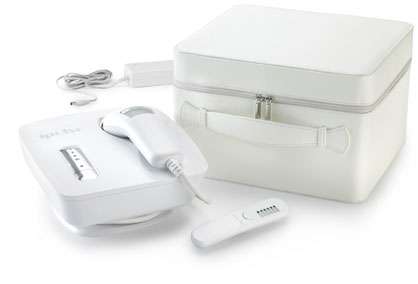Consumers can now safely treat themselves with IPL in their own home, thanks to accurate measurement. Credit: CyDen
Intense pulsed light (IPL) is used to treat unwanted body and facial hair. The light emitted from IPL devices reduces hair growth by damaging individual hairs and therefore preventing their re-growth.
This technology has been used in specialist salons and clinics since the late 1990s, and home-use devices came on the market in America and Europe around 2007.
The challenge
Whenever a product moves from professional use to consumer use, there are a number of safety hurdles to overcome. In the case of IPL, manufacturers of home-use devices have put in place 'smart' controls to minimise the risk of injury to a user's skin or eyes through accidental exposure to the device's light.
However, these controls have to be balanced with the need to deliver effective treatment to the user.
This balancing act is achieved through measurement.
The solution
NPL scientists, together with academic and industrial partners, have developed standardised measurement methods for IPL devices.
These methods can be used to define an IPL device's output in terms of its energy measurement (fluence), pulse duration (exposure time on tissue), spatial distribution (homogeneity on tissue), spectral output (wavelength or band of wavelengths), and time-resolved spectral output.
The impact
If applied correctly by manufacturers, these new measurement methods will safeguard people using home-use IPL devices.
This product (and others developed by CyDen) was rigorously tested during research and development using the new measurement methods NPL, CyDen and other partners devised. Therefore it would seem CyDen have the edge in a crowded market as they can offer their customers real assurances that they are using a safe, but effective device in their own home.
More information: Guidelines on the safety of light-based home-use hair removal devices from the European Society for Laser Dermatology, Journal of the European Academy of Dermatology and Venereology, July 2012. onlinelibrary.wiley.com/doi/10 … 011.04406.x/abstract
Provided by National Physical Laboratory





















